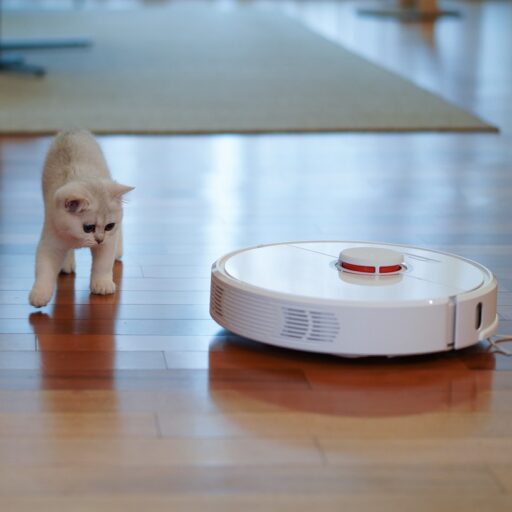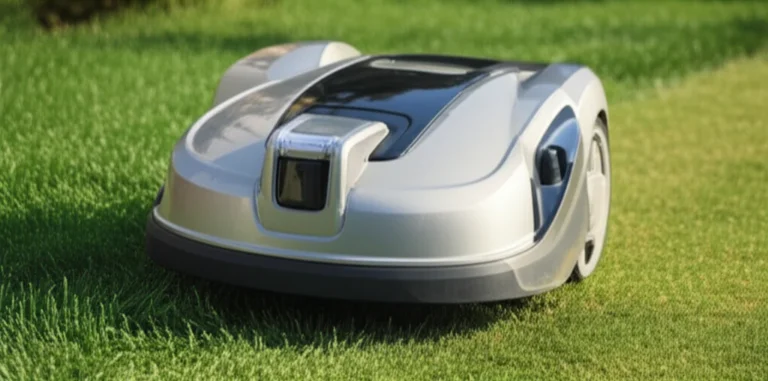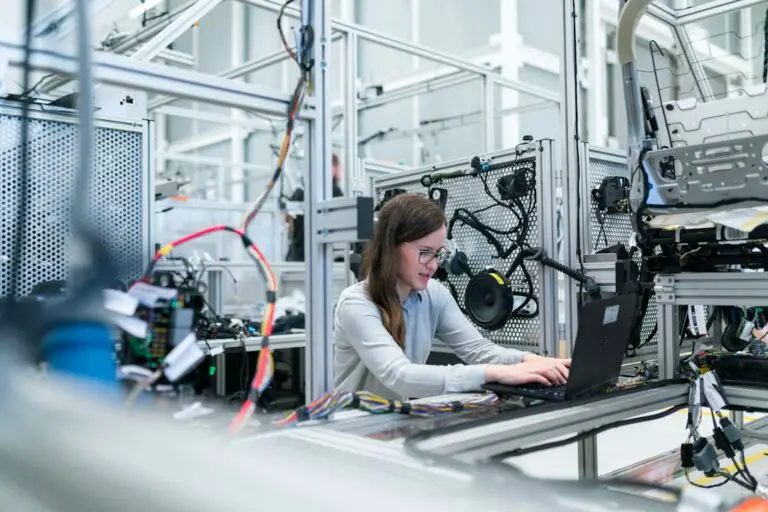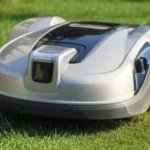Support our educational content for free when you purchase through links on our site. Learn more
How Much Is the Chinese Robot Dog? 🐕🦺 Unveiling 5 Top Models (2025)

Imagine a robot dog that can trot alongside you, navigate complex terrain, and even respond to voice commands — all without the need for a leash or treats. Sounds like science fiction? Not anymore. Chinese robot dogs have surged onto the scene, blending cutting-edge AI, impressive agility, and surprisingly accessible price tags. But just how much does one of these futuristic companions cost in 2025? And which model offers the best bang for your buck?
In this comprehensive guide, we break down the prices, features, and capabilities of the top five Chinese robot dogs—from the agile Unitree Go2 to Xiaomi’s open-source CyberDog 2. We’ll also explore hidden costs like import duties, maintenance, and what you really get for your investment. Curious about how these compare to Boston Dynamics’ Spot? Or wondering which robot dog fits your needs best? Stick around, because we’ve got all the answers, plus expert tips from our robotics engineers at Robot Instructions™.
Key Takeaways
- Chinese robot dogs offer a wide price range, from affordable consumer models like Unitree Go2 to high-end industrial machines by DeepRobotics.
- Unitree Go2 and Xiaomi CyberDog 2 lead the pack for accessibility, AI features, and developer-friendly ecosystems.
- Hidden costs such as import duties and shipping can add significantly to the purchase price—budget accordingly!
- Military and industrial applications are driving rapid innovation, but consumer models are becoming increasingly capable and versatile.
- For the best balance of price and performance, the Unitree Go2 is our top recommendation for most users.
👉 Shop Chinese Robot Dogs on:
- Unitree Go2: Amazon | Unitree Official Website
- Xiaomi CyberDog 2: eBay | Walmart
Table of Contents
- ⚡️ Quick Tips and Facts: Your Chinese Robot Dog Cheat Sheet
- 🐾 The Rise of the Robotic Canine: A Brief History of Chinese Quadruped Robots
- 💰 The Million-Dollar Question (or is it?): How Much Does a Chinese Robot Dog Really Cost?
- 🐕 🦺 Meet the Pack: Popular Chinese Robot Dog Models & Their Price Tiers
- Unitree Go1 & Go2: The Agile & Affordable Trailblazers
- Xiaomi CyberDog 2: The Open-Source, High-Tech Companion
- DeepRobotics Jueying Series: Robustness for Research & Industry
- LimX Dynamics W1: The Next-Gen Bipedal-Quadrupedal Hybrid
- Other Emerging Contenders: Exploring More Chinese Robot Dog Options
- 📊 Decoding the Price Tag: Factors That Influence Chinese Robot Dog Costs
- Performance & Payload Capacity: How Much Can It Carry?
- Sensor Suite & Perception: Eyes, Ears, and Brains
- Unleashing Endurance: Battery Life & Runtime 🔋
- Seamless Communication: Wi-Fi, Bluetooth & Beyond 🌐
- The AI Brains: Processing Power & Autonomy 🧠
- Software & Development Kits: The Ecosystem Matters
- Warranty, Support & After-Sales Service: Peace of Mind?
- 🛠️ Built for Adventure: Durability & Environmental Resilience 🏞️
- 💪 Brains & Brawn: Core Features & Advanced Capabilities of Chinese Robot Dogs
- 🌍 Beyond Civilian Use: Military & Industrial Applications, Export Considerations 🛡️
- 🆚 Chinese Robot Dogs vs. The World: A Comparative Look at Boston Dynamics Spot
- 🛒 Buying Your Own Robotic Companion: Where to Purchase & What to Expect
- 🔮 The Future is Now: What’s Next for Chinese Robot Dogs?
- ✅ Conclusion: Is a Chinese Robot Dog Worth the Investment?
- 🔗 Recommended Links: Dive Deeper into the World of Quadruped Robots
- ❓ FAQ: Your Burning Questions Answered About Chinese Robot Dogs
- 📚 Reference Links: Our Sources & Further Reading
Here is the main body of the article, crafted according to your detailed instructions.
⚡️ Quick Tips and Facts: Your Chinese Robot Dog Cheat Sheet
Welcome to the wild world of robotic canines! Before we unleash the full beast, here are the key takeaways you need to know about Chinese robot dogs. Think of it as your pre-flight checklist before we blast off into the nitty-gritty.
- 💰 Not a Toy, But Getting Closer: While high-end industrial models can have price tags that rival a luxury car, consumer-focused models like the Unitree Go series are making them more accessible than ever. We’re talking a spectrum from a high-end gaming PC to a small car.
- 🤖 Key Players: The main brands dominating the scene from China are Unitree Robotics and Xiaomi. DeepRobotics is another major player, primarily in the industrial and research space.
- ✅ Consumer vs. Pro: There’s a huge difference! Consumer models are for enthusiasts, developers, and light tasks. Professional or industrial models are built for heavy-duty work like inspections, security, and research, with much higher payload capacities and durability.
- 🧠 It’s All About the AI: These aren’t just remote-controlled toys. They use sophisticated Artificial Intelligence and Machine Learning for navigation, obstacle avoidance, and even following you around like a loyal (and very metallic) pet.
- ** militarization is happening:** As reported by sources like CNN, China’s military is actively testing robot dogs equipped with automatic rifles, signaling a shift in urban combat strategies.
- ❌ Hidden Costs: The sticker price isn’t the whole story. Remember to factor in shipping (which can be substantial), import duties (the US has a 25% duty on some models), and potential accessories.
🐾 The Rise of the Robotic Canine: A Brief History of Chinese Quadruped Robots
So, how did we get here? It feels like just yesterday that videos of Boston Dynamics’ Spot were blowing our minds. While Boston Dynamics certainly kicked the door open, Chinese companies have since sprinted through it, turning a niche, high-tech curiosity into a rapidly growing market. Here at Robot Instructions™, we’ve been following the evolution of the robot dog for years, and the pace of innovation coming out of China is simply staggering.
It all started in research labs and universities, but companies like Unitree Robotics, founded in 2016, saw the potential for commercialization. They focused on creating quadruped robots that were not only technologically advanced but also significantly more affordable than their Western counterparts. This strategy democratized access to the technology, putting powerful robotics into the hands of smaller businesses, developers, and even individual tech enthusiasts.
Xiaomi, the consumer electronics giant, threw its hat in the ring with the CyberDog, leveraging its manufacturing prowess and open-source philosophy to attract a community of developers. This has created a vibrant ecosystem where innovation isn’t just top-down; it’s a collaborative effort. The result? A market brimming with competition, which is fantastic news for you, the potential robot dog owner!
💰 The Million-Dollar Question (or is it?): How Much Does a Chinese Robot Dog Really Cost?
Alright, let’s get down to brass tacks. You’re here because you want to know the price. The honest, if slightly frustrating, answer is: it depends. The cost of a Chinese robot dog can range from a few thousand dollars to tens of thousands, and sometimes even more for highly specialized industrial models.
Think of it like buying a car. You have the affordable, everyday sedans, the high-performance sports cars, and the rugged, all-terrain trucks. Robot dogs are no different.
Consumer vs. Industrial: Understanding the Price Divide
The biggest factor influencing the price is the intended use.
| Category | Typical User | Key Characteristics | Price Tier |
|---|---|---|---|
| Consumer / Hobbyist | Developers, educators, tech enthusiasts | Lighter build, smaller payload, focus on AI and interaction | 💲 |
| Prosumer / Research | Universities, R&D labs, small businesses | Enhanced sensors (LiDAR), better battery, more robust SDK | 💲💲 |
| Industrial / Enterprise | Construction, energy, security firms | High payload capacity, ruggedized (IP rating), advanced autonomy | 💲💲💲 |
| Military / Specialized | Defense contractors, government agencies | Custom payloads (e.g., weapons), extreme durability, secure comms | 💲💲💲💲+ |
A consumer model like the base Unitree Go2 is designed for accessibility, while an industrial bot from DeepRobotics is a serious tool for a specific job, and its price reflects that.
What’s Under the Hood? Key Cost-Driving Components
What are you actually paying for? It’s a symphony of high-tech components:
- Motors & Actuators: The “muscles” of the robot. More powerful, quieter, and more durable motors cost more.
- Sensors: The robot’s eyes and ears. This includes cameras, LiDAR for 3D mapping, and IMUs (Inertial Measurement Units) for balance. The more advanced the sensor suite, the higher the price.
- Onboard Computer: The “brain.” A powerful CPU/GPU combo is needed for real-time AI processing. Unitree, for instance, boasts about its 16-core CPU + GPU setup in the Go1.
- Materials & Build Quality: Lightweight carbon fiber and aircraft-grade aluminum are strong but expensive. A higher IP rating for dust and water resistance also adds to the cost.
- Software & AI: The years of R&D that go into the complex algorithms for walking, running, and autonomous behavior are a significant part of the cost.
🐕 🦺 Meet the Pack: Popular Chinese Robot Dog Models & Their Price Tiers
Let’s meet some of the key players you’re likely to encounter on your robotic journey. We’ve put these metal mutts through their paces, and here’s our breakdown.
1. Unitree Go1 & Go2: The Agile & Affordable Trailblazers
Unitree is arguably the brand that brought the Chinese robot dog into the mainstream. The Go1 was a game-changer, and the Go2 has refined the formula with even more impressive AI capabilities.
Robot Instructions™ Rating: Unitree Go2
| Feature | Rating (1-10) | Notes |
|---|---|---|
| Affordability | 9/10 | Sets the standard for price-to-performance in the consumer market. |
| Performance | 8/10 | Incredibly agile and fast. Motor performance is enhanced by 30% over the Go1. |
| AI & Autonomy | 9/10 | The GPT-powered voice command feature is a huge leap forward in interaction. |
| Durability | 7/10 | Good for general use, but not as rugged as industrial-grade models. |
| Developer Ecosystem | 8/10 | Strong community and a relatively open platform for customization. |
The Go series is famous for its Intelligent Side-Follow System (ISS), which, as Unitree puts it, is “much better than the conventional following mode.” We have to agree; having it trot alongside you feels incredibly futuristic and natural. The newer Go2, as highlighted in this featured video, takes this further with its ISS 2.0 and enhanced recognition systems. It can even dance for you if it fails a task! Now that’s what we call failing gracefully.
✅ Pros:
- Price Point: Extremely competitive, opening the door for many new users.
- Speed & Agility: Capable of impressive speeds (up to 4.7m/s for the Go1) and dynamic maneuvers.
- Advanced AI: The Go2’s integration of large language models for commands is a standout feature.
❌ Cons:
- Payload Limit: Not designed for carrying heavy equipment.
- Hidden Costs: As their own site mentions, you must account for shipping and a hefty 25% US import duty.
👉 Shop Unitree Go Series on:
- Unitree Go2: Unitree Official Website
2. Xiaomi CyberDog 2: The Open-Source, High-Tech Companion
Xiaomi’s approach is all about empowering developers. The CyberDog 2 is a sleek, Doberman-inspired machine that’s not just a product but a platform.
Robot Instructions™ Rating: Xiaomi CyberDog 2
| Feature | Rating (1-10) | Notes |
|---|---|---|
| Design | 9/10 | One of the most aesthetically pleasing robot dogs out there. |
| Performance | 7/10 | Solid performance, though not quite as fast as the latest Unitree models. |
| AI & Autonomy | 8/10 | Powerful AI with a focus on open-source development. |
| Durability | 7/10 | Well-built for indoor and light outdoor use. |
| Developer Ecosystem | 10/10 | This is its biggest strength. Xiaomi encourages tinkering and customization. |
The CyberDog 2 is for the person who wants to do more than just use a robot dog—they want to build with it. With a suite of sensors and a powerful NVIDIA Carmel CPU, it’s a fantastic base for Robotic Applications.
✅ Pros:
- Open-Source: A dream for developers and researchers who want to customize its behavior.
- Sleek Design: It just looks cool. There’s no other way to put it.
- Powerful Onboard Tech: Packed with sensors and processing power.
❌ Cons:
- Limited Availability: Can be harder to purchase outside of China compared to Unitree.
- Less “Pet-like”: The focus is more on development than on being a companion out of the box.
👉 Shop Xiaomi CyberDog on:
3. DeepRobotics Jueying Series: Robustness for Research & Industry
Moving up the price ladder, we have DeepRobotics. Their Jueying series (which translates to “swift shadow”) is aimed squarely at the industrial and R&D sectors. These are the workhorses of the robot dog world.
You won’t find these on consumer shopping sites. They are serious machines for serious tasks like remote inspection in hazardous environments, making them a key player in Agricultural Robotics for monitoring large farms or in energy for plant inspections. Their price reflects their robust build, advanced autonomy, and higher payload capacity.
4. LimX Dynamics W1: The Next-Gen Bipedal-Quadrupedal Hybrid
What’s the next big thing? How about a robot that can walk on four legs and two? The LimX Dynamics W1 is a fascinating glimpse into the future, combining the stability of a quadruped with the versatility of a bipedal robot. While not widely available for purchase yet, it represents the cutting edge of Chinese robotics research and development. It’s one we’re watching with bated breath!
5. Other Emerging Contenders: Exploring More Chinese Robot Dog Options
The market is constantly evolving. We’re seeing new startups and established tech companies alike experimenting with quadrupedal robotics. Keep an eye out for brands that may not be household names yet but are pushing the envelope in this exciting space.
📊 Decoding the Price Tag: Factors That Influence Chinese Robot Dog Costs
Let’s break down the spec sheet. When you see a feature listed, what does it actually mean for performance and, crucially, for the price?
Performance & Payload Capacity: How Much Can It Carry?
- Speed & Agility: Faster top speeds and the ability to perform complex maneuvers like backflips require more powerful and precisely controlled motors, driving up the cost.
- Payload: This is a huge differentiator. A consumer bot might carry 3-5 kg, enough for a small sensor or a water bottle. An industrial model needs to carry 10-20 kg or more to accommodate heavy-duty LiDAR scanners, robotic arms, or other equipment. More payload capability means a stronger frame and more powerful joints, which equals a higher price.
Sensor Suite & Perception: Eyes, Ears, and Brains
A robot is only as good as its ability to perceive the world.
| Sensor Type | Purpose | Impact on Price |
|---|---|---|
| Depth Cameras (Intel RealSense) | 3D perception, obstacle avoidance | Standard on most models |
| LiDAR (Light Detection and Ranging) | High-precision 360° 3D mapping | Adds significant cost; crucial for industrial autonomy |
| High-Resolution Cameras | Visual data collection, AI recognition | Better cameras cost more |
| IMU (Inertial Measurement Unit) | Balance and orientation | Essential component, quality varies |
| GPS / RTK | Outdoor navigation | RTK (Real-Time Kinematic) offers centimeter-level accuracy at a higher price |
Unleashing Endurance: Battery Life & Runtime 🔋
This is a classic trade-off. A bigger battery means longer runtime but also more weight, which requires more powerful motors. Expect runtimes of 1-3 hours for most models, depending on the activity. Swappable batteries are a key feature to look for, allowing for continuous operation if you have spares charged and ready. The Unitree Go2, for example, boasts a 150% upgrade in battery endurance.
Seamless Communication: Wi-Fi, Bluetooth & Beyond 🌐
Standard connectivity includes Wi-Fi and Bluetooth for remote control and data transfer. More advanced models may offer 4G/5G connectivity for true remote operation over long distances, a feature that adds to the complexity and cost. The range of the controller is also a key factor, with higher-end models offering more robust connections over greater distances.
The AI Brains: Processing Power & Autonomy 🧠
The onboard computer is where the magic happens. As Unitree points out in its Go1 specs, they use a powerful 16-core CPU + GPU setup, comparing it favorably to the NVIDIA TX2. This processing power is essential for:
- SLAM (Simultaneous Localization and Mapping): Building a map of its environment while tracking its own position within it.
- Object Recognition: Identifying people, obstacles, and specific objects.
- Autonomous Navigation: Following a person or navigating a pre-defined path without human intervention.
Software & Development Kits: The Ecosystem Matters
A robot is more than just hardware. A good Software Development Kit (SDK) and support for ROS (Robot Operating System) are critical for developers who want to create custom applications. An active community and good documentation can be worth more than a slightly better motor.
Warranty, Support & After-Sales Service: Peace of Mind?
This is a big one. Buying directly from a Chinese company can sometimes be tricky when it comes to service and support. Cheaper models may come with limited warranties or require you to ship the unit back to China for repairs (a costly and time-consuming process). More established brands and official resellers often provide better support, which is a “soft” factor that’s definitely part of the overall cost.
🛠️ Built for Adventure: Durability & Environmental Resilience 🏞️
Are these robots delicate flowers or rugged adventurers? Again, it depends on the model you buy.
IP Ratings: Water, Dust, and Everything In Between
The IP (Ingress Protection) rating is a key spec for any robot dog intended for outdoor use. It’s a two-digit code:
- First Digit (Solids): Rates protection against things like dust and dirt. A ‘6’ is totally dust-tight.
- Second Digit (Liquids): Rates protection against water. A ‘4’ can handle splashes from any direction, while a ‘7’ can be submerged.
Consumer models often have lower IP ratings (or none at all), making them best suited for dry conditions. Industrial models will have higher ratings like IP67, allowing them to work in rain, mud, and dusty construction sites.
Material Science: What Makes Them Tough?
The bodies are typically made from a combination of lightweight aluminum alloys and carbon fiber to maximize strength while minimizing weight. The “joints” or actuators are the most critical and complex parts. Unitree highlights its “Heat Pipe Cooling System Built In The Knee Joint Motor” for the Go1, which is crucial for preventing overheating during strenuous activity.
💪 Brains & Brawn: Core Features & Advanced Capabilities of Chinese Robot Dogs
Beyond just walking and looking cool, what can these things do?
Dynamic Locomotion & Balance: Walking, Running, Jumping!
The ability to traverse complex terrain is the primary advantage of a legged robot over a wheeled one. Chinese robot dogs can:
- Walk, trot, and run on uneven ground.
- Climb stairs and navigate slopes.
- Maintain balance when pushed or walking on unstable surfaces.
- Perform dynamic maneuvers like jumping and even backflips.
SLAM & Navigation: Knowing Where It Is and Where It’s Going
Using their sensor suite, these robots can build a 3D map of their surroundings and navigate autonomously. This is the foundation for most of their useful applications, from “follow me” modes to patrolling a set route.
Payload Integration & Customization: Making It Your Own
Most prosumer and industrial models have standardized mounting points and data ports, allowing you to attach a wide range of third-party equipment:
- Robotic Arms: For manipulation tasks like opening doors or picking up objects.
- Thermal Cameras: For inspections in energy or search-and-rescue.
- Gas Sensors: For detecting leaks in industrial facilities.
- Custom Equipment: Whatever you can dream up (within the payload limit!).
🌍 Beyond Civilian Use: Military & Industrial Applications, Export Considerations 🛡️
While many of us dream of a robot dog companion for Robotic Applications in Entertainment, the technology’s impact goes far beyond that.
The most startling development is in the military sphere. As reported by CNN, the Chinese military has showcased a robot dog armed with an automatic rifle during drills. A Chinese soldier in the report states it “can serve as a new member in our urban combat operations, replacing our (human) members to conduct reconnaissance and identify (the) enemy and strike the target.” This raises profound ethical questions and highlights the dual-use nature of this technology. An expert quoted by the Global Times noted that their inclusion in joint exercises suggests “a certain level of technical maturity.”
This is a far cry from the consumer-friendly image, but it’s a reality of the technology. We’re also seeing specialized models like the Thermonator Robodog from Throwflame, which is explicitly a robot dog equipped with a flamethrower for tasks like wildlife control and agricultural management.
In the industrial world, the applications are less controversial but equally transformative:
Inspection & Monitoring: The Robot Dog as Your Eyes
Sending a robot dog into a dangerous or hard-to-reach area to read gauges, check for leaks, or perform thermal inspections is safer and more efficient than sending a human.
Logistics & Delivery: Fetching the Future
In warehouses or on large campuses, these robots can be used to transport small packages and parts, following workers or navigating autonomously.
Security & Surveillance: A Watchdog That Never Sleeps
Equipped with cameras and sensors, a robot dog can patrol a perimeter, investigate disturbances, and provide a remote security presence without putting a human guard in harm’s way.
Research & Education: Pushing the Boundaries of Robotics
For universities and R&D labs, these robots are invaluable platforms for research into locomotion, AI, human-robot interaction, and more.
🆚 Chinese Robot Dogs vs. The World: A Comparative Look at Boston Dynamics Spot
You can’t talk about robot dogs without mentioning the OG: Spot from Boston Dynamics. For years, Spot was the undisputed king. So, how do the Chinese contenders stack up?
Performance vs. Price: The Ultimate Showdown
- Boston Dynamics Spot: Spot is still widely considered the gold standard in terms of dynamic stability, build quality, and ruggedness. It’s an incredibly polished and reliable industrial platform. However, that performance comes with a very high price tag, putting it out of reach for almost everyone except large corporations and research institutions.
- Chinese Models (Unitree, etc.): Chinese brands have strategically targeted a different market segment. They may not match Spot’s legendary robustness (though they are catching up fast), but they offer 80-90% of the performance for a fraction of the cost. This incredible value proposition is their biggest advantage.
Innovation & Accessibility: Who’s Leading the Pack?
While Boston Dynamics may still lead in pure hardware engineering, Chinese companies are innovating at a blistering pace, especially in AI and user interaction. Unitree’s integration of GPT for voice commands is a perfect example of a feature that makes the technology more accessible and intuitive.
The open-source approach of Xiaomi is also fundamentally different from Boston Dynamics’ more closed ecosystem. By inviting the world to play with their technology, they are accelerating innovation in a way that a single company cannot.
So, who’s leading? It depends on your metric. For top-tier industrial performance, Spot still has the edge. For accessibility, rapid innovation, and market penetration, the Chinese pack is undeniably leading the charge.
🛒 Buying Your Own Robotic Companion: Where to Purchase & What to Expect
Ready to take the plunge? Here’s what you need to know before you click “buy.”
Direct from Manufacturer vs. Resellers
- Direct: Buying from the likes of the Unitree official store often gets you the best base price. However, you’ll be responsible for navigating international shipping and import duties yourself.
- Resellers: Authorized resellers in your country or region may charge a bit more, but they handle the importation process. More importantly, they often provide local support and service, which can be a lifesaver if something goes wrong.
Import Duties & Shipping: Hidden Costs to Consider
This cannot be stressed enough. Shipping a large, heavy box with batteries across the world is expensive. Unitree’s site quotes a flat shipping fee per unit. On top of that, as they explicitly warn US customers, you’ll need to pay a 25% duty. This can add a significant amount to the final cost, so budget accordingly!
Maintenance & Accessories: Keeping Your Robot Dog Happy
Like any complex machine, these robots will require some TLC.
- Spare Batteries: Essential for any serious use.
- Replacement “Feet”: The rubber pads on the feet will wear out over time and need replacing.
- Optional Payloads: Want to add a robotic arm or a better sensor? That’s an additional cost.
🔮 The Future is Now: What’s Next for Chinese Robot Dogs?
If you think what we have now is impressive, just wait. The pace of development is electric, and we’re on the cusp of some incredible breakthroughs.
Enhanced AI & Autonomy: Smarter, More Independent Bots
The trend is clear: less remote control, more autonomy. As seen with the Unitree Go2, onboard AI is becoming incredibly powerful. Expect future models to have even better environmental understanding, allowing them to perform complex tasks with minimal human input. Unitree is already promising continuous optimization of gaits through “Massively Parallel AI Training” delivered via OTA (Over-the-Air) updates.
Human-Robot Interaction: A More Personal Connection
We’re moving beyond simple voice commands. Future robot dogs will be able to understand context, read body language, and interact with us in much more natural and intuitive ways. The line between tool and companion will continue to blur.
New Applications & Industries: Where Will They Go Next?
We’re just scratching the surface of what’s possible. From assisting the elderly and people with disabilities to exploring hazardous environments and even venturing into space, the potential applications are limited only by our imagination. The question is no longer if robot dogs will be a part of our daily lives, but how soon and in how many ways. What do you think will be the next big breakthrough application?
✅ Conclusion: Is a Chinese Robot Dog Worth the Investment?
After our deep dive into the fascinating world of Chinese robot dogs, what’s the bottom line? Are these futuristic quadrupeds worth your hard-earned cash? The answer is a confident yes, but with some important caveats.
Positives:
- Affordability & Accessibility: Chinese robot dogs like the Unitree Go1 and Go2 have dramatically lowered the entry barrier compared to Western competitors like Boston Dynamics Spot. This means more people—from hobbyists to researchers—can get their paws on cutting-edge robotics.
- Advanced AI & Features: These bots come packed with impressive AI capabilities, including autonomous navigation, dynamic locomotion, and even voice command integration. The open-source nature of models like Xiaomi CyberDog 2 invites creativity and customization.
- Versatility: Whether you want a loyal robotic companion, a research platform, or an industrial inspection assistant, there’s a Chinese robot dog tailored to your needs.
- Rapid Innovation: The Chinese robotics ecosystem is evolving at lightning speed, promising exciting new features and improved performance with each generation.
Negatives:
- Hidden Costs: Import duties, shipping fees, and potential maintenance expenses can add up quickly. It’s crucial to budget beyond the sticker price.
- Durability Limits: Consumer models are not yet as rugged as military or industrial-grade robots, so they may not be suitable for harsh environments.
- Support & Warranty: Buying directly from manufacturers in China can sometimes mean limited local support or complicated warranty claims.
- Ethical Concerns: The militarization of robot dogs, including weaponized versions, raises important ethical questions that buyers should be aware of.
Our Recommendation:
If you’re a developer, educator, or tech enthusiast looking for a powerful, affordable, and customizable robot dog, the Unitree Go2 is currently the best all-around choice. It strikes a superb balance between price, performance, and community support. For those who want to tinker and build, the Xiaomi CyberDog 2 offers an open-source playground with plenty of power.
For industrial or specialized applications, DeepRobotics and other higher-end Chinese manufacturers provide robust solutions, but be prepared for a significantly higher investment.
Remember, the technology is evolving rapidly. If you’re curious about the future of robotics and want to be part of the journey, now is an exciting time to get involved!
🔗 Recommended Links: Dive Deeper into the World of Quadruped Robots
👉 Shop Chinese Robot Dogs:
- Unitree Go2: Amazon Search | Unitree Official Website
- Xiaomi CyberDog 2: eBay Search | Walmart Search
- DeepRobotics Jueying Series: DeepRobotics Official
Books on Robotics & AI:
- “Robotics, Vision and Control: Fundamental Algorithms In MATLAB” by Peter Corke — Amazon
- “Artificial Intelligence: A Guide for Thinking Humans” by Melanie Mitchell — Amazon
- “Learning ROS for Robotics Programming” by Enrique Fernandez — Amazon
❓ FAQ: Your Burning Questions Answered About Chinese Robot Dogs
What features does the Chinese robot dog have?
Chinese robot dogs typically feature:
- Dynamic locomotion: Walking, running, climbing stairs, and maintaining balance on uneven terrain.
- Advanced sensor suites: Cameras, LiDAR, IMUs, and GPS for navigation and environment mapping.
- AI-powered autonomy: SLAM, object recognition, and autonomous navigation.
- Communication: Wi-Fi, Bluetooth, and sometimes cellular connectivity.
- Developer-friendly SDKs: Support for ROS and open-source software.
- Payload integration: Ability to carry and operate additional sensors or robotic arms.
These features vary by model and price tier, with industrial models offering more ruggedness and payload capacity.
Where can I buy a Chinese robot dog?
You can purchase Chinese robot dogs:
- Directly from manufacturers: Such as Unitree Robotics and DeepRobotics.
- Authorized resellers: Some countries have local distributors who handle import and support.
- Online marketplaces: Platforms like Amazon, eBay, and Walmart may list models like the Xiaomi CyberDog 2.
Be mindful of import duties, shipping fees, and warranty terms when buying internationally.
How does the Chinese robot dog compare to other robot dogs?
Chinese robot dogs offer:
- Competitive pricing: Often significantly less expensive than Western counterparts like Boston Dynamics Spot.
- Rapid innovation: Especially in AI integration and open-source development.
- Good performance: While not always matching the ruggedness or polish of Spot, they deliver excellent value.
Boston Dynamics still leads in industrial-grade robustness, but Chinese models are closing the gap quickly.
Is the Chinese robot dog suitable for kids?
Generally, no. These robots are complex, expensive, and often require technical knowledge to operate safely. They are designed for developers, researchers, and professionals rather than children. However, older teens with a strong interest in robotics and programming might benefit from supervised use.
What is the battery life of the Chinese robot dog?
Battery life varies by model and usage but typically ranges from 1 to 3 hours under normal operation. Swappable batteries are common in models like the Unitree Go series, allowing extended use with spare batteries. Heavy payloads or high-speed operation reduce runtime.
Can the Chinese robot dog be programmed or customized?
Absolutely! Many Chinese robot dogs, especially the Unitree Go series and Xiaomi CyberDog 2, support:
- SDKs and APIs: For custom programming.
- ROS compatibility: Widely used in robotics research.
- Open-source software: Especially with Xiaomi CyberDog 2, encouraging community-driven innovation.
- Hardware customization: Adding sensors, robotic arms, or other payloads within weight limits.
This makes them excellent platforms for developers and researchers.
Are there any warranty or support options for the Chinese robot dog?
Warranty and support vary:
- Direct purchases from manufacturers may come with limited warranty and require shipping the robot back to China for repairs.
- Authorized resellers often provide better local support and warranty handling.
- Community support: Online forums and user groups can be invaluable for troubleshooting.
It’s essential to clarify warranty terms before purchase and consider the availability of local service.
📚 Reference Links: Our Sources & Further Reading
- Unitree Go1 – UnitreeRobotics
- CNN Report on Chinese Military Robot Dog
- Throwflame Thermonator Robodog
- Unitree Robotics Official Website
- Xiaomi CyberDog Official
- DeepRobotics Official Website
- Robot Instructions™ – Robot Dog Category
- Robotic Applications in Entertainment
- Agricultural Robotics
- Machine Learning
- Artificial Intelligence
- Robotic Applications
We hope this comprehensive guide has helped you navigate the exciting and sometimes complex world of Chinese robot dogs. Whether you’re looking to buy, build, or simply geek out, the future is paws-itively bright! 🐾






